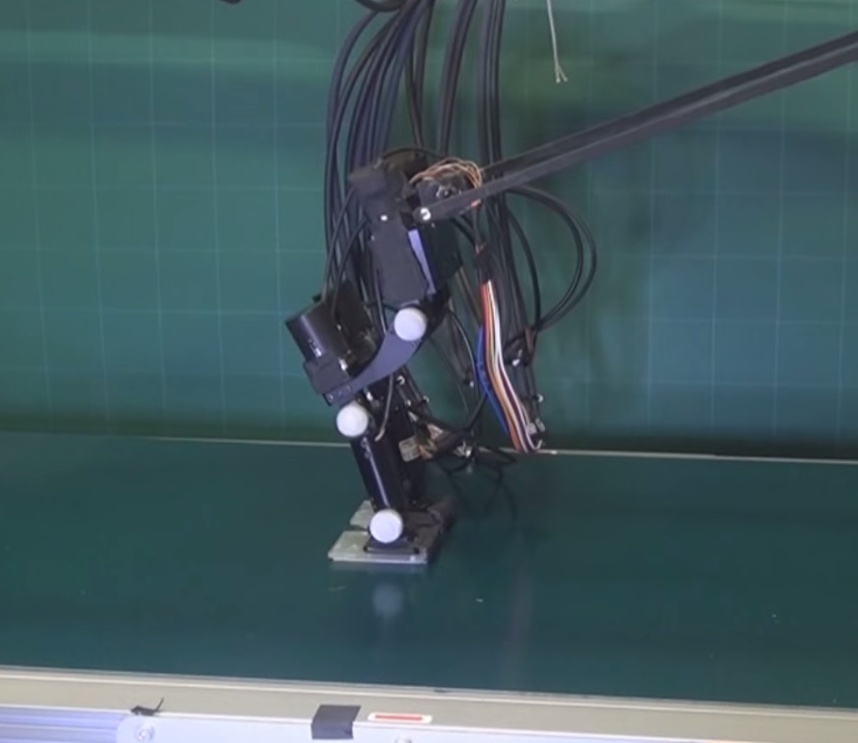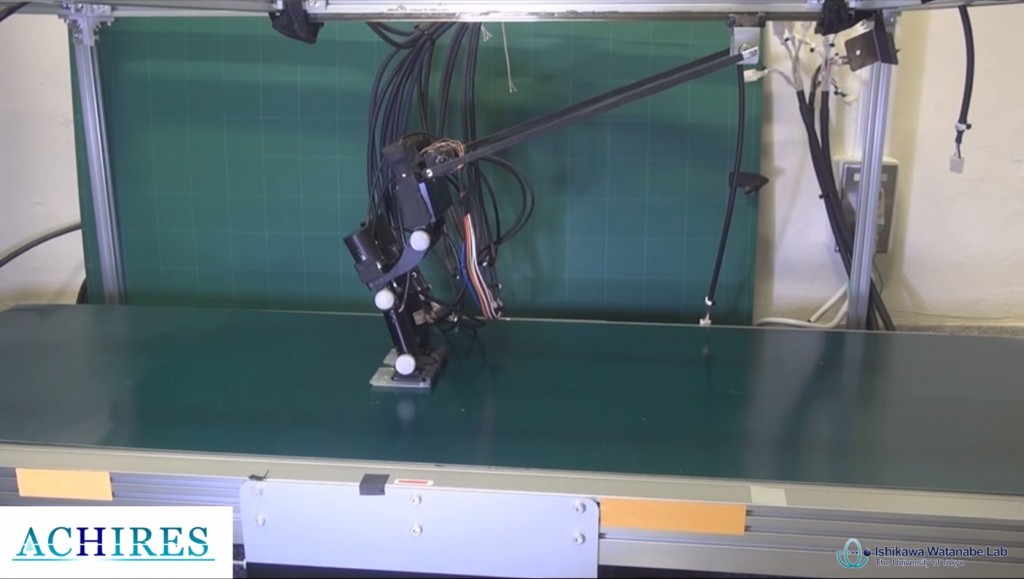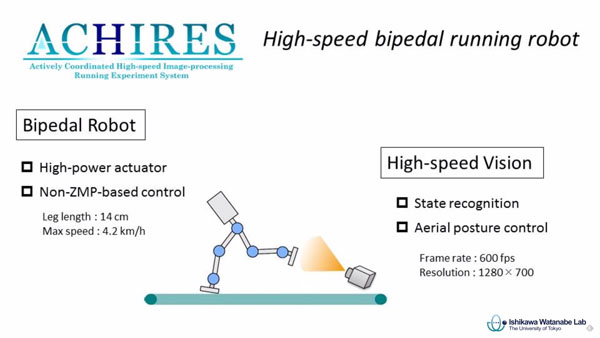
2.6 miles per hour. That’s how fast the latest humanoid robot of Japan can run.
With its legs measuring at just over 5.5 inches, this new prototype robot is fresh out of the oven at University of Tokyo’s Ishikawa Watanabe Laboratory.
While fast, ACHIRES, short for “Actively Coordinated High-speed Image-processing Running Experiment System,” is not the first biped robot to be able to run at a good pace. Honda’s famous ASIMO robot is already capable of running, among many other things. What sets ACHIRES apart is the fact that it is not ZMP-based.
What is ZMP?
ZMP, or zero moment point, is a popular concept that many biped robots are based on. It is a solution to the issue created by the larger upper-body mass of biped robots, which makes it difficult for a humanoid robot to maintain balance when in motion. The ZMP concept allows the robot to maintain dynamical stability by keeping its center of gravity within a set range while it is walking, taking calculated steps to ensure that it doesn’t tip over.
However, ZMP is not without its limitations. It is calculation-intensive, and because the range for the center of gravity is relatively limited, maximum speeds are capped. As such, researchers at Ishikawa Watanabe are testing alternative solutions.
A Faster Solution
What they’ve come up with is a combination of a high-speed camera and biped robot legs with very high-speed actuators. The result of this combination is a robot that is capable of rapid detection of the robot’s state, allowing it to adjust its motion to rebalance itself mid-stride. This capability enables ACHIRES to push its max speed.
The technology for ACHIRES’s instantaneous reaction may sound familiar. That’s because Ishikawa Watanabe Laboratory used a similar concept in creating Janken Robot, a rock-paper-scissors robot that boasts a 100% win rate.
As notable as this development is, it’s not without its limits. The robot is still tethered, and it currently requires a very powerful camera to detect its state, so the setup currently only functions in controlled settings. Suffice to say, you shouldn’t expect to see an army of Chucky-sized androids marching down your street – yet. A more realistic application of this technology, as suggested by researchers at Ichikawa Watanabe Laboratory, would be the development of ultra-fast factory line robots.


